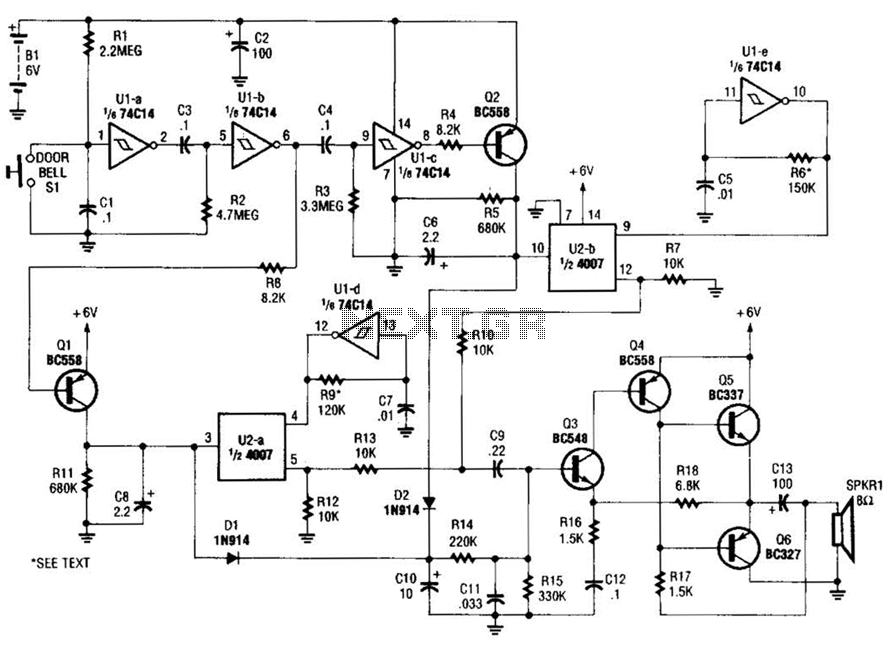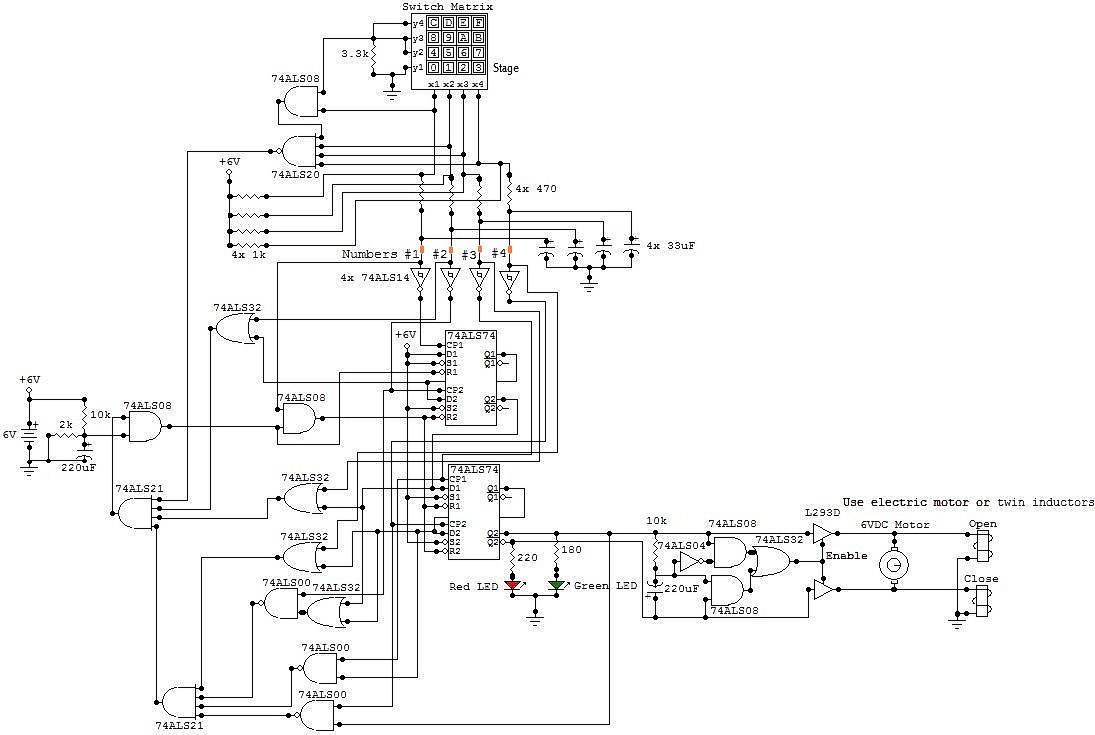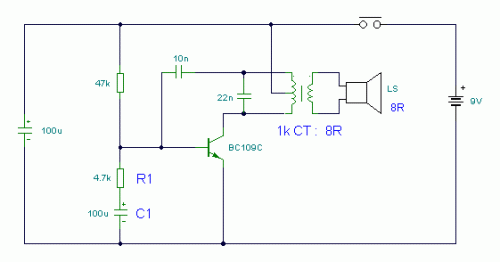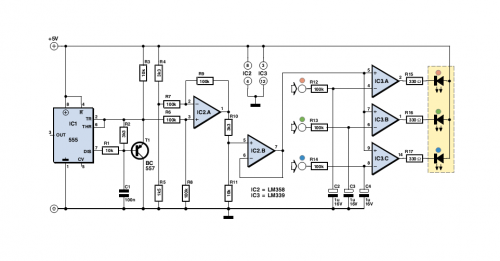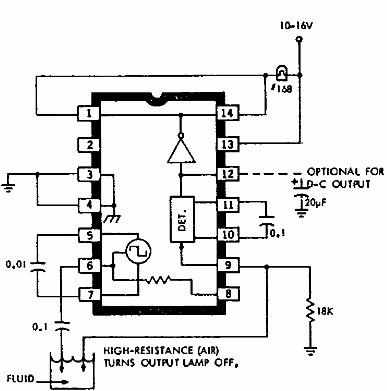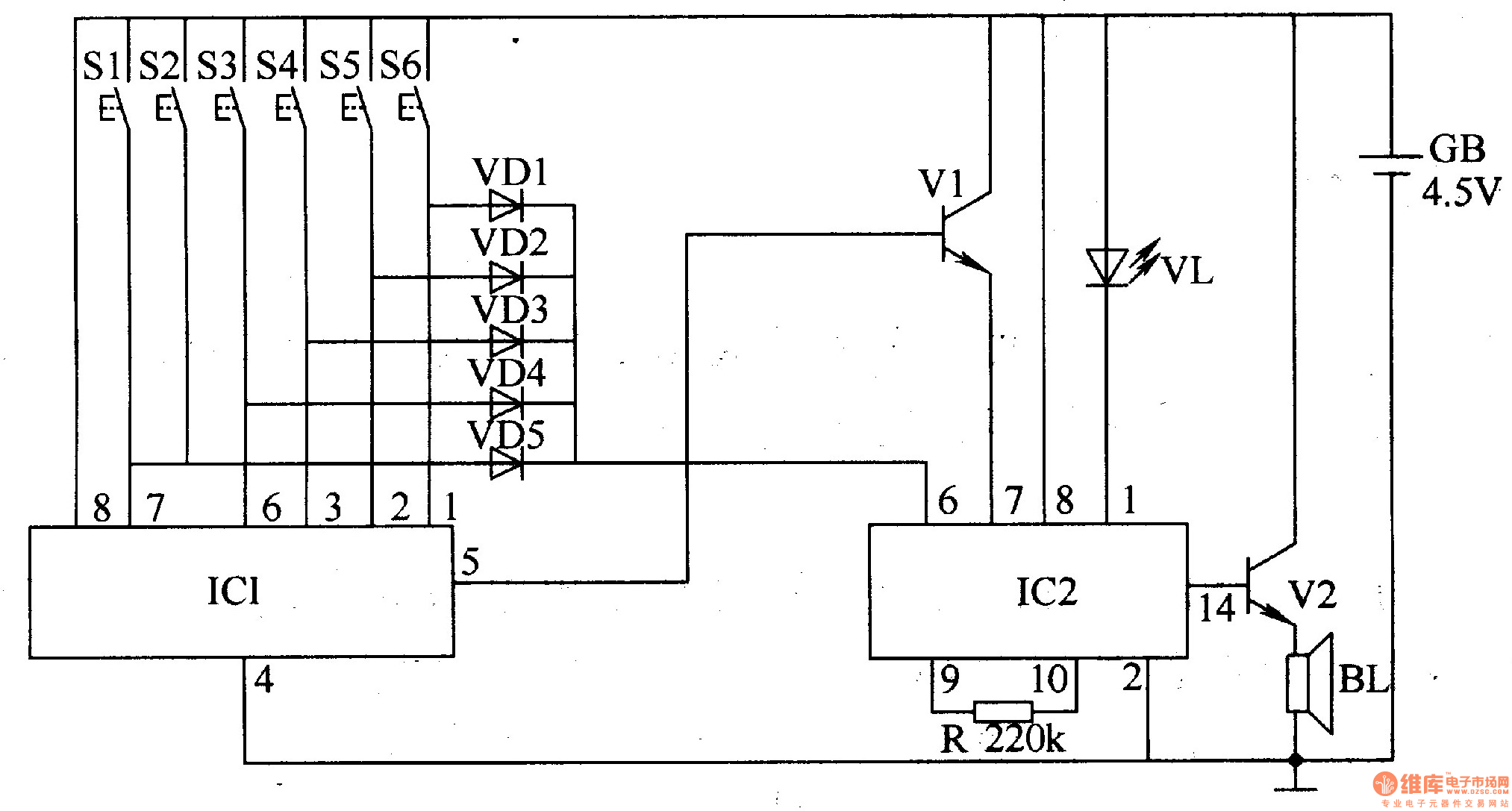
Electronic bongos
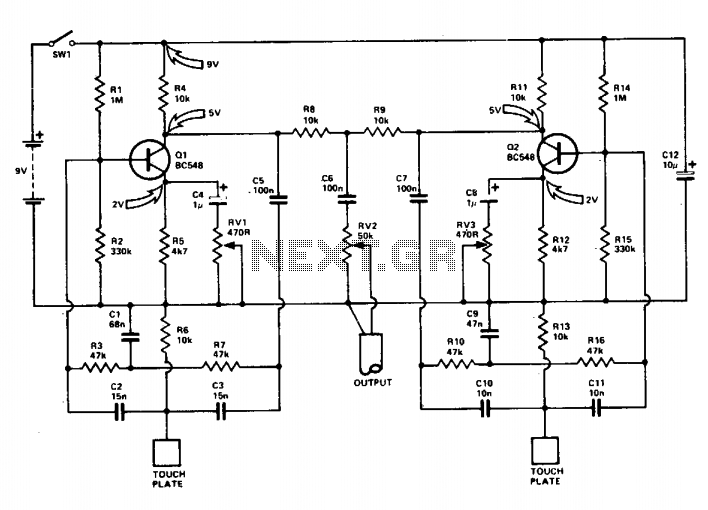
This circuit consists of twin-T sine-wave oscillators. Each oscillator has a filter in the feedback loop. If the loop gain is greater than unity, the circuit will oscillate. Gain is adjusted to be just less than unity. Touching the touch plate starts the oscillator, but the moment your finger is removed from the touch plate, the oscillations will die away. The rate of decay is a function of circuit gain and controlled by RV1 and RV3.
The twin-T sine-wave oscillator circuit utilizes two identical oscillator configurations that generate sine waves through the use of feedback filters. Each oscillator comprises a twin-T network, which is characterized by its unique filtering properties that shape the frequency response. The feedback loop is critical for sustaining oscillations; if the gain within this loop exceeds unity, the circuit will begin to oscillate.
In this design, the gain is meticulously set to be slightly below unity, ensuring stability while allowing for oscillation initiation through an external stimulus. The touch plate serves as a manual trigger; when a user touches the plate, it effectively provides the necessary feedback to start the oscillation process. However, the oscillation is transient—once the user removes their finger from the plate, the feedback loop is disrupted, leading to a gradual decay of the oscillation amplitude.
The decay rate of the oscillations is influenced by the circuit's gain settings, which can be fine-tuned using variable resistors RV1 and RV3. These components allow for precise control over the feedback network, enabling adjustments to the oscillation duration and decay characteristics. By varying the resistance values, the user can manipulate the circuit's gain, thus affecting how quickly the oscillations diminish after the initial triggering event. This feature adds an interactive element to the circuit, making it suitable for applications where user engagement is desired, such as in sound synthesis or educational demonstrations of oscillatory behavior in electronic circuits.This circuit consists of twin-T sine-wave oscillators. Each oscillator has a filter in the feedback loop. If the loop gain is greater than unity, the circuit will oscillate. Gain is adjusted to be just less than unity. Touching the touch plate starts the oscillator, but the moment your finger is removed from the touch plate the oscillations will die away. The rate of decay is a function of circuit gain and controlled by RV1 (and RV3). 🔗 External reference
The twin-T sine-wave oscillator circuit utilizes two identical oscillator configurations that generate sine waves through the use of feedback filters. Each oscillator comprises a twin-T network, which is characterized by its unique filtering properties that shape the frequency response. The feedback loop is critical for sustaining oscillations; if the gain within this loop exceeds unity, the circuit will begin to oscillate.
In this design, the gain is meticulously set to be slightly below unity, ensuring stability while allowing for oscillation initiation through an external stimulus. The touch plate serves as a manual trigger; when a user touches the plate, it effectively provides the necessary feedback to start the oscillation process. However, the oscillation is transient—once the user removes their finger from the plate, the feedback loop is disrupted, leading to a gradual decay of the oscillation amplitude.
The decay rate of the oscillations is influenced by the circuit's gain settings, which can be fine-tuned using variable resistors RV1 and RV3. These components allow for precise control over the feedback network, enabling adjustments to the oscillation duration and decay characteristics. By varying the resistance values, the user can manipulate the circuit's gain, thus affecting how quickly the oscillations diminish after the initial triggering event. This feature adds an interactive element to the circuit, making it suitable for applications where user engagement is desired, such as in sound synthesis or educational demonstrations of oscillatory behavior in electronic circuits.This circuit consists of twin-T sine-wave oscillators. Each oscillator has a filter in the feedback loop. If the loop gain is greater than unity, the circuit will oscillate. Gain is adjusted to be just less than unity. Touching the touch plate starts the oscillator, but the moment your finger is removed from the touch plate the oscillations will die away. The rate of decay is a function of circuit gain and controlled by RV1 (and RV3). 🔗 External reference
